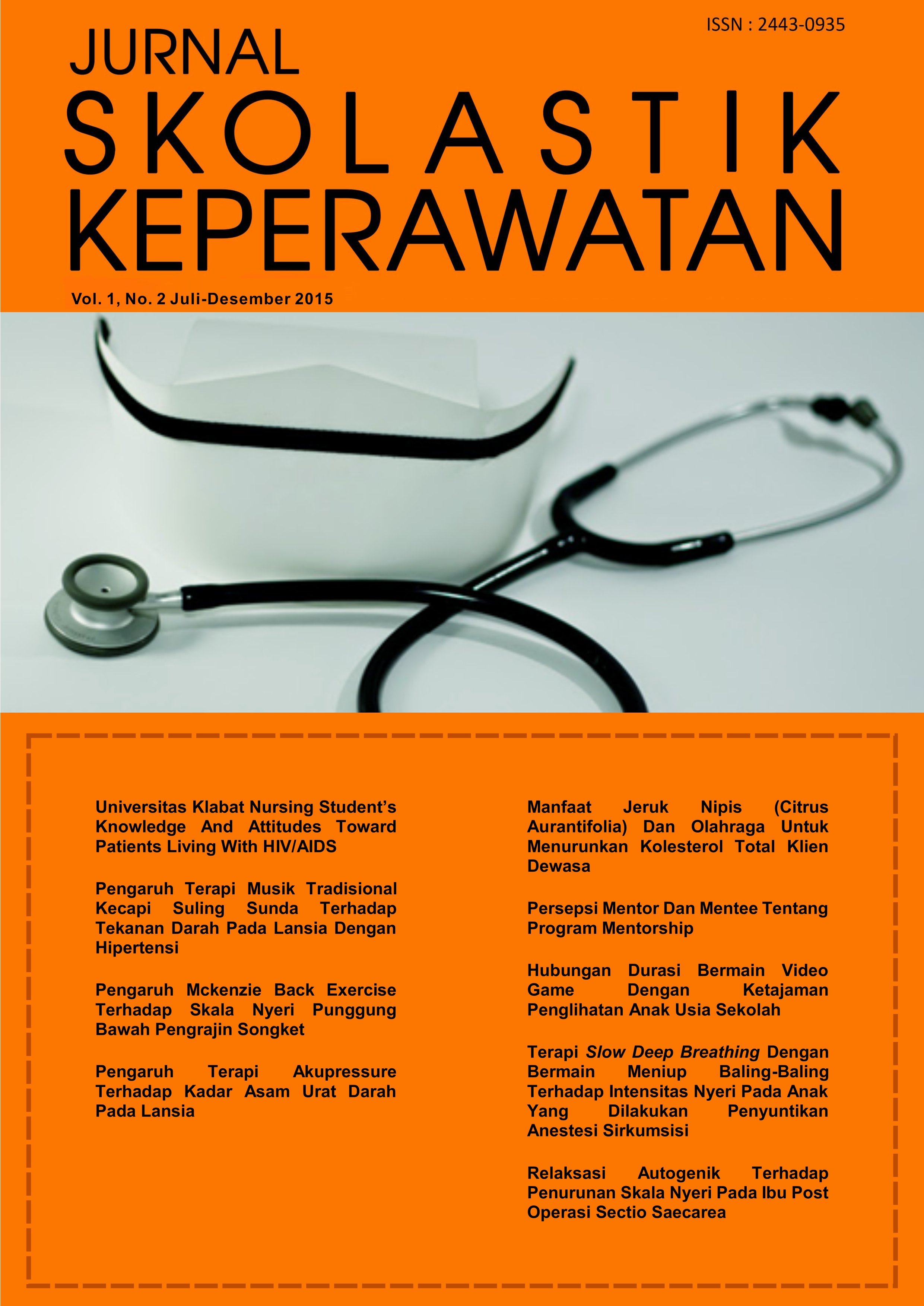PERSEPSI MENTOR DAN MENTEE TENTANG PROGRAM MENTORSHIP
Keywords:
Mentee, Mentor, Persepsi, Program mentorshipAbstract
Evaluation in the first semester showed that there are 51 students of ETP batch 2013 who have to follow the matriculation program, seven students quitted the program, and five students from ETP batch 2014 were dropped out for violating academic rules. The mentorship program started in the Academic Year of 2013/2014 on its Even Semester. The evaluation for mentorship program has not been done within the Faculty of Nursing, Universitas Pelita Harapan. Objective: to identify the mentor’s and mentee’s perception about the mentorship program. Methods: The study design is descriptive quantitative study. The samples are 52 mentors and 314 mentees. The instrument is questionnaires in the form of self-report questionnaire. The data analyzed using the univariate method. Results: 38 mentors (73.08%) and 208 mentees (66.24%) that mentorship program can increase knowledge in learning, 29 mentors (55.77%) and 165 mentees (52.55%) agree that improve collaboration with others. 20 mentors (83.33%) and 85 mentees (88.54%) from 24 mentors and 96 mentees that intend to leave campus agree that mentorship program can increase influence to remain in on-campus accommodation. Discussions: It is expected that the mentorship program can be developed better, specifically for the mentor recruitment program and the ongoing training for mentors.
Downloads
References
Andrews, J. and Clark, R. (2011) Peer Mentoring Works! How Peer Mentoring Enhances Student Success in Higher Education. Birmingham: Aston University. Retrieved from https://www.heacademy.ac.uk/sites/default/files/aston_peer_mentoring_evaluation_toolkit_1.pdf
Buku Panduan FIK UPH. (2013). Fakultas Ilmu Keperawatan Universitas Pelita Harapan.
Brittian, A. S., Sy, S. R., & Stokes, J. E. (2009). Mentoring: Implications for african american college students. Western Journal of Black Studies, 33(2), 87-97. Retrieved from http://search.proquest.com/docview/200362739?accountid=38628.
DuBois, D, L., & Rhodes, J. E. (2006). Introduction to special issue: Youth mentoring: Bridging science with practice. Journal of Community Psychology, 34 (6), 647 – 655.
Garringer., M. & MacRae, P. (2008) Building Effective Peer Mentoring Programs in Schools: An Introductory Guide., Mentoring Resource Center. Published in cooperation with the U.S. Department of Education, Office of Safe and Drug-Free Schools.
Giordana, S., & Wedin, B. (2010). Peer mentoring for multiple levels of nursing students. Nursing Education Perspectives, 31(6), 394-6. Retrieved from http://search.proquest.com/docview/853718886?accountid=62688
Gray, W. (2008). Before knowledge exits. Oil & Gas Investor, (4), 20
Kwasik, H., & Fulda, P. (2006). Strengthening professionals: A chapter-level formative evaluation of the Medical Library Association mentoring initiative. Journal of the Medical Library Association, 94(1), 19-29.
Marquis, B.L. & Huston, C., J. ( 2010). Kepemimpinan dan manajemen keperawatan: teori & aplikasi, ed 4, alih Bahasa, Widyawati dkk, Editor edisi bahasa Indonesia Egi komara yuda dkk, Jakarta: EGC.
Mathews, P. (2006). The role of mentoring in promoting organizational competitiveness. Competiveness Review, 16(2), 158-169.
Minor, F., D. (2007) Building effective peer mentor programs learning communities & educational reform. USA: Washington Center.
Robinson, E., & Niemer, L. (2010). A peer mentor tutor program for Academic Success in Nursing. Nursing Education Perspectives, 31(5), 286-289.
Tomey, A. M. (2008). Guide to nursing management and leadership. Philadelphia: Mosby Elsevier.
Downloads
Published
How to Cite
Issue
Section
License
Copyright (c) 2021 Grace Solely Houghty, Yakobus Siswadi

This work is licensed under a Creative Commons Attribution-NonCommercial-ShareAlike 4.0 International License.
Authors who publish with this journal agree to the following terms:
- Authors retain copyright and grant the journal right of first publication with the work simultaneously licensed under a Creative Commons Attribution-NonCommercial-ShareAlike 4.0 International (CC BY-NC-SA 4.0) that allows others to share the work with an acknowledgment of the work's authorship and initial publication in this journal.
- Authors are able to enter into separate, additional contractual arrangements for the non-exclusive distribution of the journal's published version of the work (e.g., post it to an institutional repository or publish it in a book), with an acknowledgment of its initial publication in this journal.
- Authors are permitted and encouraged to post their work online (e.g., in institutional repositories or on their website) prior to and during the submission process, as it can lead to productive exchanges, as well as earlier and greater citation of published work (See The Effect of Open Access).









